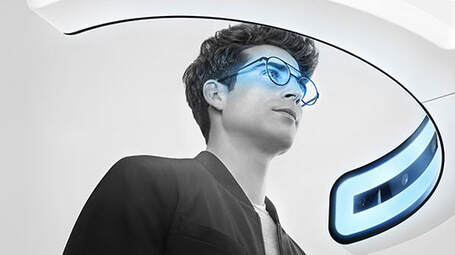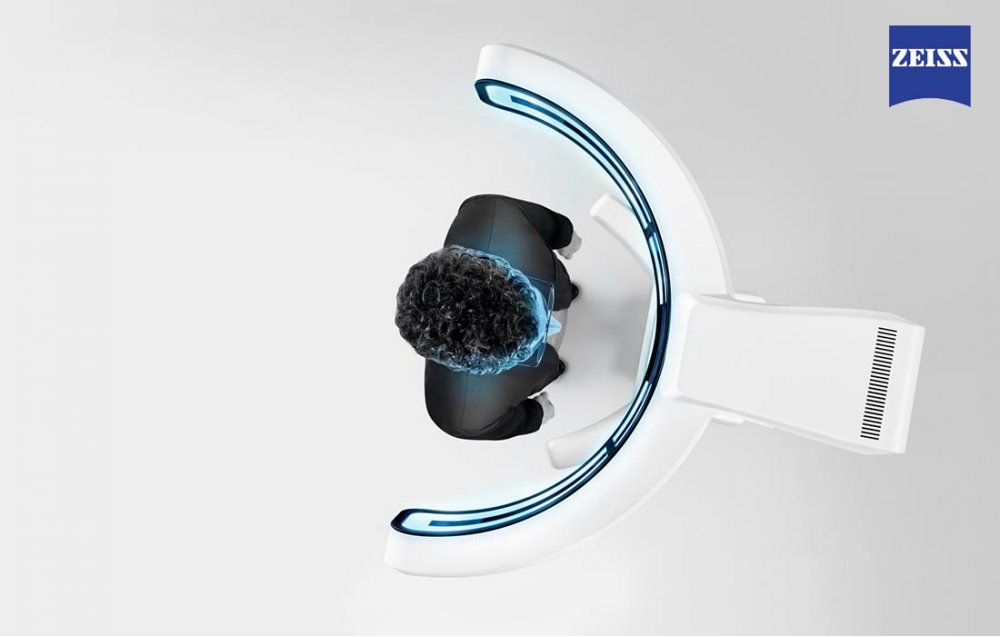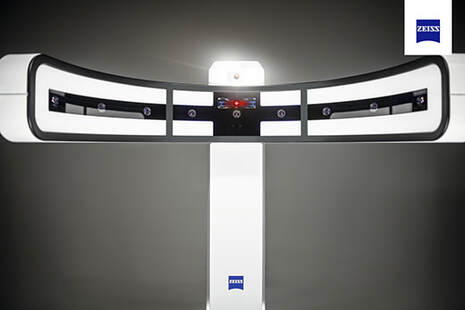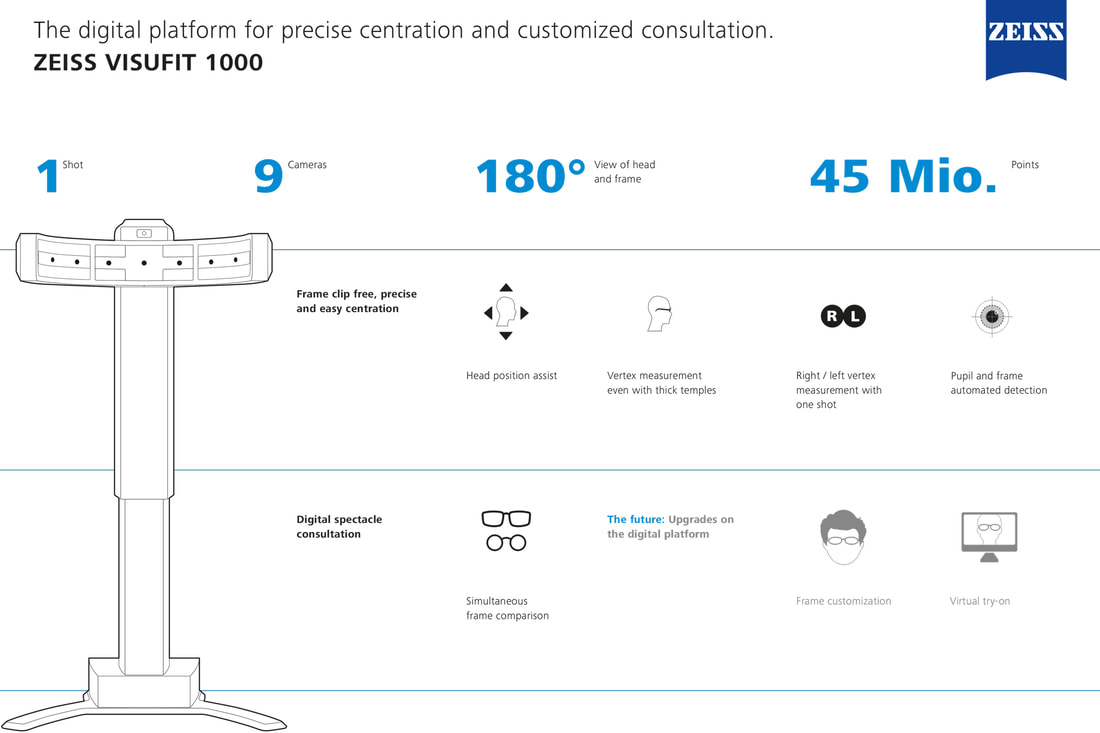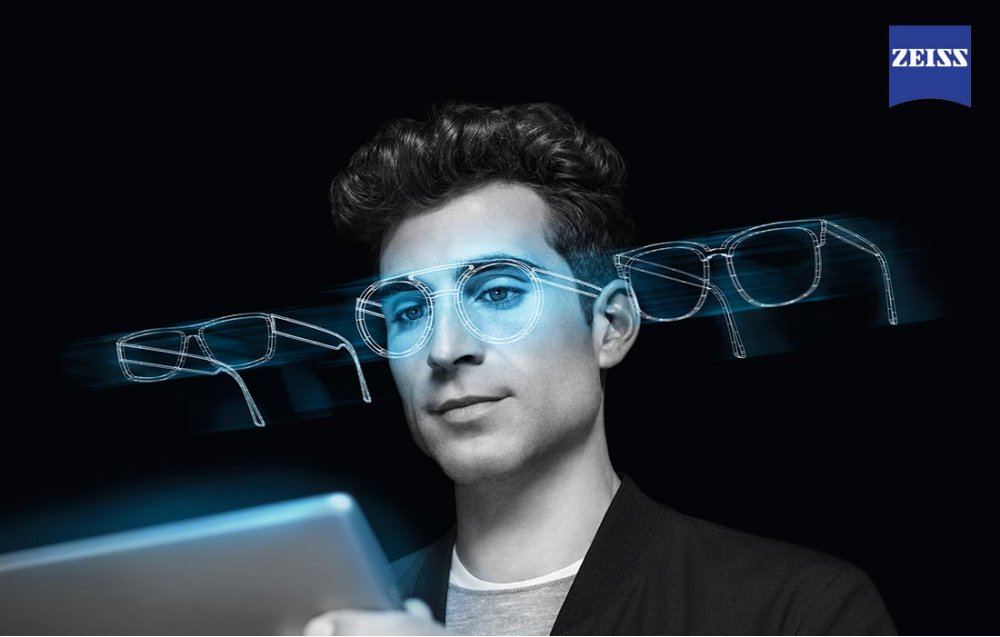Good vision requires more than just the correct prescription!
Lens alignment to match your face in the frame is crucial to get the best results!
|
That's why at Waipapa Eyecare we have invested in the latest digital centration technology from Zeiss the VISUFIT 1000 |
|
Modern Digital Technology for Modern Digital Lenses
Poor lens alignment is arguably the number 1 reason for poor lens performance resulting in less than optimal vision.
Studies show when progressive lenses are poorly aligned, by as little as 1.0mm, then up to 50% of the intermediate and near vision areas are compromised. Stronger prescriptions suffering more than weaker prescriptions.
So does using a felt tip pen to mark your pupil centre in the frame and then measuring that with a ruler cut it any more? Of course not. Especially in this digital age with modern digitally surfaced progressive lenses that can now be customised to your face and frame shape. If you provide all the needed and correct measurements you can get a fully compensated progressive lens to match your unique face and frame shape combination, what we refer to as "as worn".
The question you most likely have is what does this "as worn" mean?
The short answer, the best possible lens prescription in the frame you have chosen and matching your unique face.
The long answer, is that when you are in the Optometrist's chair and they work out your prescription they are using more factors than you might think. For instance, the distance the lenses are from your eyes, the amount of tilt or angle the lenses are on and the amount of wrap around your face the lenses have.
As you can no doubt imagine, sitting in the Optometrists chair is a controlled environment. The phoropter (the device in front of your eyes, with all the lenses in it) or trial frame is sitting nice and level with little wrap or tilt. The distance from each persons eyes to the phoropter also varies.
Then in the real world you chose a frame you like. This almost never sits exactly the same as when you were sitting in the optometrists chair using the phoropter or trial frame.
So when the computer program that generates your new lenses is provided with all the needed and correctly measured data, like tilt and wrap etc you get an optimised lens prescription as worn in the frame you selected.
Studies show when progressive lenses are poorly aligned, by as little as 1.0mm, then up to 50% of the intermediate and near vision areas are compromised. Stronger prescriptions suffering more than weaker prescriptions.
So does using a felt tip pen to mark your pupil centre in the frame and then measuring that with a ruler cut it any more? Of course not. Especially in this digital age with modern digitally surfaced progressive lenses that can now be customised to your face and frame shape. If you provide all the needed and correct measurements you can get a fully compensated progressive lens to match your unique face and frame shape combination, what we refer to as "as worn".
The question you most likely have is what does this "as worn" mean?
The short answer, the best possible lens prescription in the frame you have chosen and matching your unique face.
The long answer, is that when you are in the Optometrist's chair and they work out your prescription they are using more factors than you might think. For instance, the distance the lenses are from your eyes, the amount of tilt or angle the lenses are on and the amount of wrap around your face the lenses have.
As you can no doubt imagine, sitting in the Optometrists chair is a controlled environment. The phoropter (the device in front of your eyes, with all the lenses in it) or trial frame is sitting nice and level with little wrap or tilt. The distance from each persons eyes to the phoropter also varies.
Then in the real world you chose a frame you like. This almost never sits exactly the same as when you were sitting in the optometrists chair using the phoropter or trial frame.
So when the computer program that generates your new lenses is provided with all the needed and correctly measured data, like tilt and wrap etc you get an optimised lens prescription as worn in the frame you selected.
Quick, easy and accurate centration data means better results
The ZEISS VISUFIT 1000 creates a 180-degree view of the consumer's face and the frames using nine cameras and 45 million points. The centration data determination is based on 3D coordinates.
|
Nine images at the press of a buttonObtaining data from the array of nine cameras is quick and simple with just the press of a button a single shot ensures that the measurement process is completed quickly and easily.
|
